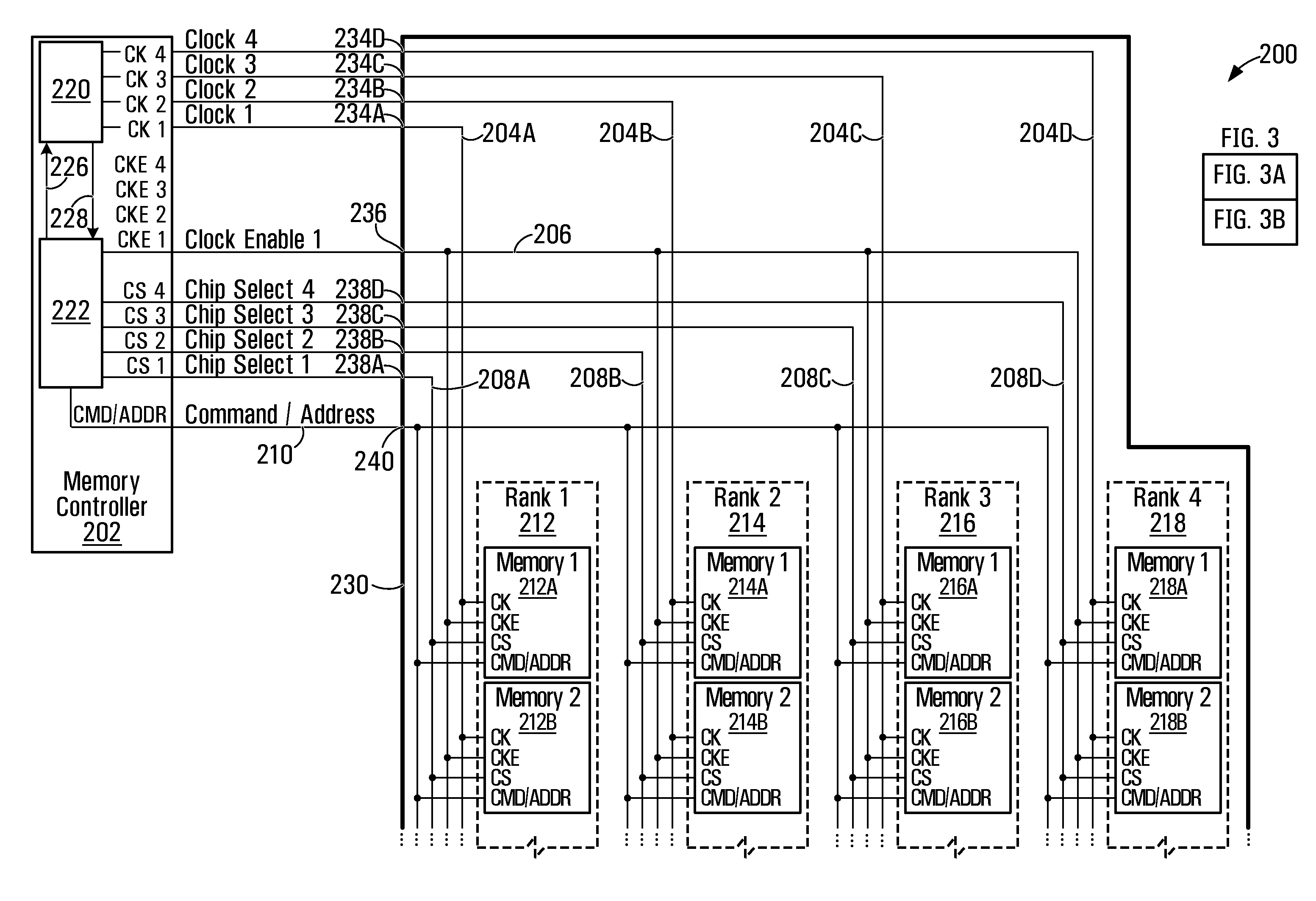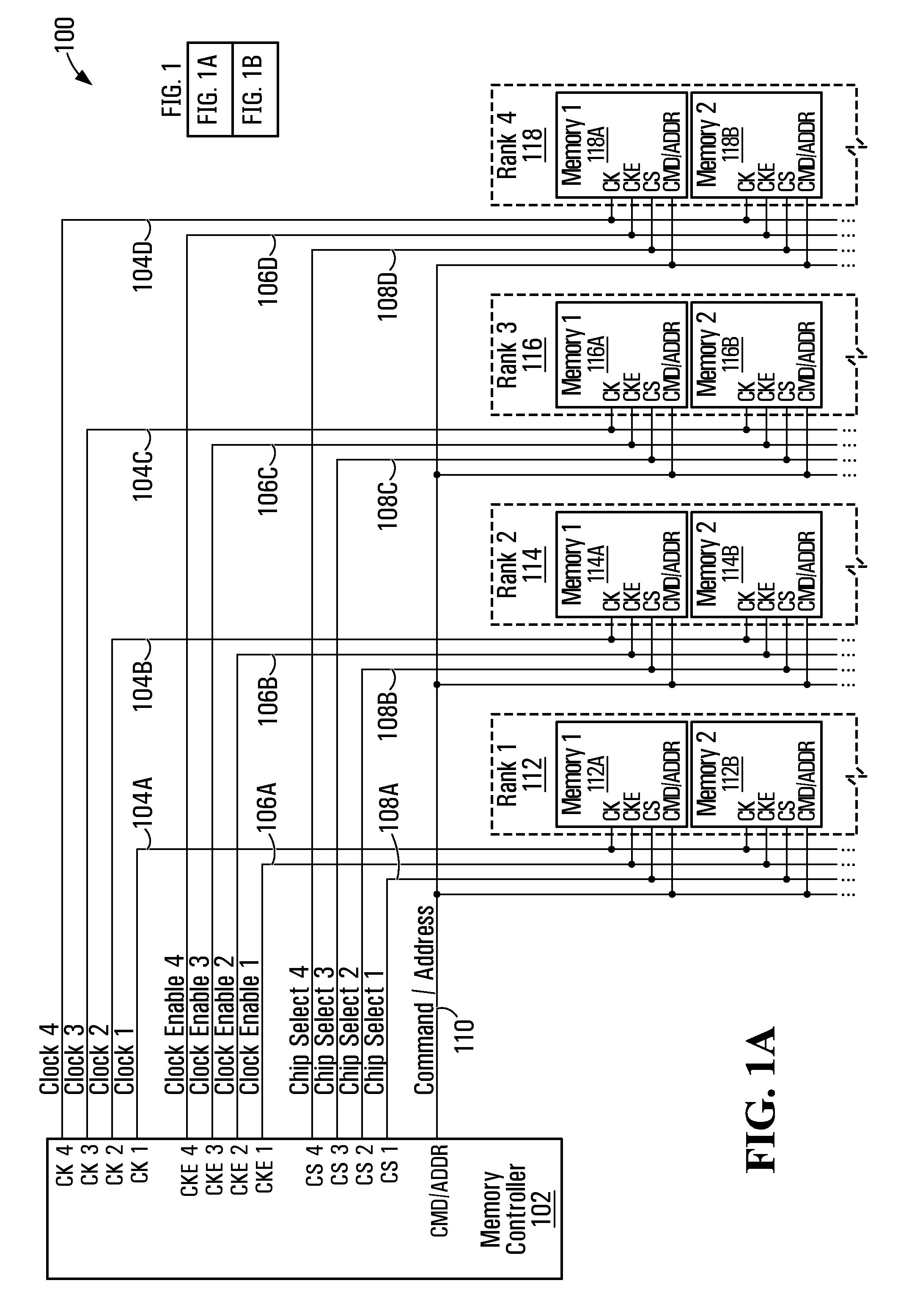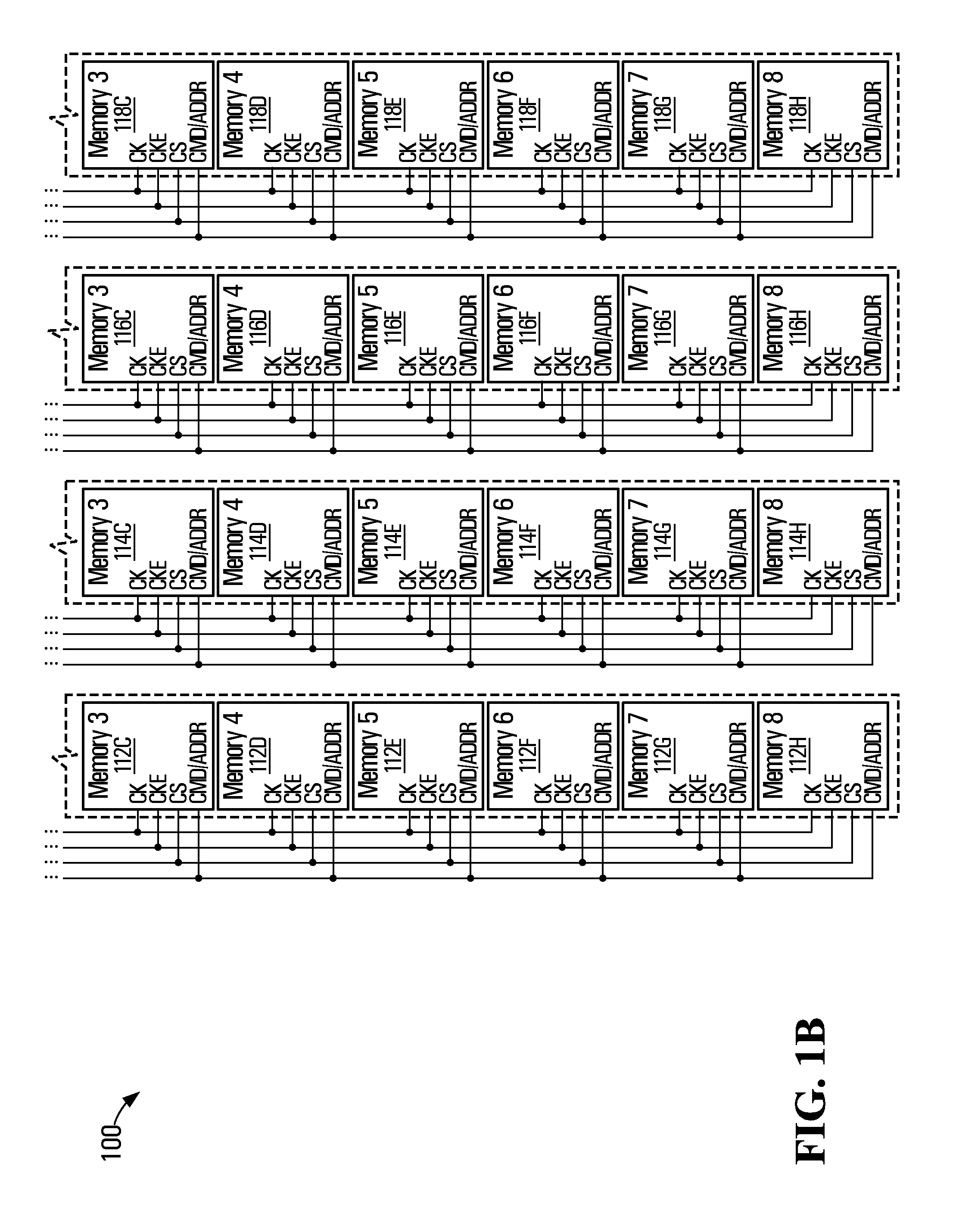Clock generation for synchronous circuits with slow settling control signals
a control signal and synchronous circuit technology, applied in the field of synchronous circuits, can solve the problems of high clock rate used in these circuits, signal on some signal lines driving multiple modules may not settle to be reliably sampled, and design constraints in high-speed interface circuits
- Summary
- Abstract
- Description
- Claims
- Application Information
AI Technical Summary
Benefits of technology
Problems solved by technology
Method used
Image
Examples
Embodiment Construction
[0026]A typical example of high speed synchronous multi-module circuit is a synchronous dynamic random access memory (SDRAM) circuit. SDRAM is used in many computing devices such as portable (laptop) computers, desktops and workstations. SDRAM typically allows for data transfer at speeds in excess of conventional DRAM or static random access memory.
[0027]A schematic diagram of a conventional SDRAM circuit 100 is illustrated in FIG. 1. Circuit 100 includes a memory controller 102, and memory ranks 112, 114, 116, and 118. Each memory rank in turn includes a number of memory cells. For example, memory rank 112 includes cells 112A, 112B, 112C, 112D, 112E, 112F, 112G, 112H. Memory rank 114 includes cells 114A, 114B, 114C, 114D, 114E, 114F, 114G, 114H. Memory rank 116 includes cells 116A, 116B, 116C, 116D, 116E, 116F, 116G, 116H. Memory rank 118 includes cells 118A, 118B, 118C, 118D, 118E, 118F, 118G, 118H.
[0028]Command / address lines 110 interconnect memory controller 102 to memory ranks ...
PUM
 Login to View More
Login to View More Abstract
Description
Claims
Application Information
 Login to View More
Login to View More - R&D
- Intellectual Property
- Life Sciences
- Materials
- Tech Scout
- Unparalleled Data Quality
- Higher Quality Content
- 60% Fewer Hallucinations
Browse by: Latest US Patents, China's latest patents, Technical Efficacy Thesaurus, Application Domain, Technology Topic, Popular Technical Reports.
© 2025 PatSnap. All rights reserved.Legal|Privacy policy|Modern Slavery Act Transparency Statement|Sitemap|About US| Contact US: help@patsnap.com



